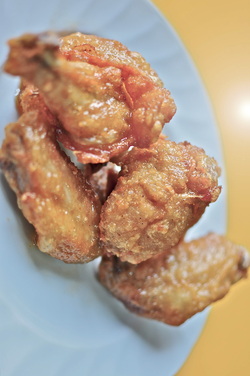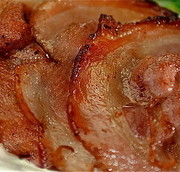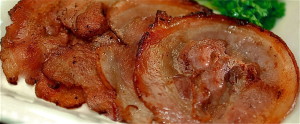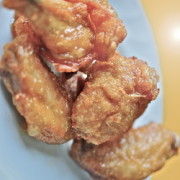
Of the hundreds I’ve interviewed for the different resto-stalls-special events positions needed, ONLY 2 or 3 know what “rancidity” is. Sad, as many are graduates of cooking schools, culinary institutes, food technology, chemistry and HRM.
Chicken shot above is hereby presented as it is almost always the type of food “rancidity” is very evident.
RANCID. Do use your frying oil, even to similar type of product, for about 3-5 times on certain day. Ref your used oil. Or keep well-covered in any place you wish for 2 days. Fry on it same type of product the 6th time. The “unusual smell” plus the “out of this world taste of your fried food” will explain RANCIDITY. To differentiate, fry similar item on a new oil. Smell and taste. Compare.
To explain further is to be too technical like: oil has boiling and smoking points. It boils upon reaching certain temp but still keeps its chemical properties until it has reached smoking point. Breaking up of these chem properties reacts with and affects taste of food. Smoking point is reached when oil is “overused” and/or being used on consistent high temp frying.
In short, the higher the smoking point of oil the better for even continuous high temp deep frying. Try sourcing for palm oil or palm olein that has high smoking point.
Many fast food outlets and poorly managed restos do use their oil for 10-15 times, sometimes more. Here, “rancid taste” is common.
I suggest that you be too critical the next time you order your fried chicken. Smell first. Taste intently. No matter what type of presentation or concoction it is offered…if it is cooked in “rancid oil”, you will notice.





















